About FjordPhyto
FjordPhyto started in 2015 to investigate how melting glaciers are affecting the phytoplankton along the western Antarctic Peninsula.
Data includes information on seawater temperature, conductivity, salinity, Secchi depth readings, euphotic depth, ocean color (RGB), glacial meltwater (oxygen isotope), phytoplankton abundance, carbon biomass, and species diversity (microscopy, metabarcoding). We have detected hundreds of species of phytoplankton in samples collected by travelers and we are in the process of creating a phytoplankton identification guide for use in the field.
See our Publications & Media tab for results of our work.
Sharing Science
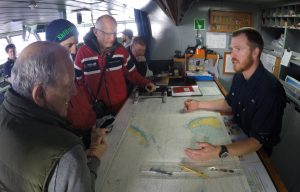
Community Effort
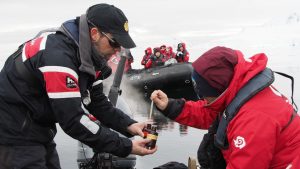
We Love Challenges
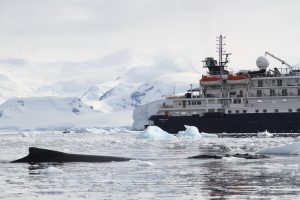
Scientific Questions
Glacial Meltwater

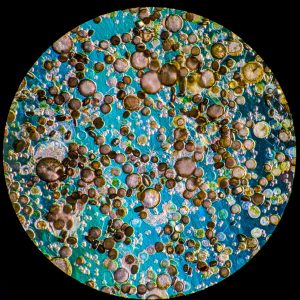
Long Term

Why does this matter?
Antarctic Ecosystems
Researchers are discovering that fjords along the west Antarctic Peninsula are hotspots of biological activity and biodiversity. Intense phytoplankton blooms occur throughout the summer feeding animals that live in the water and on the seafloor. One of the most crucial animals to the Antarctic ecosystem are krill. Krill feed penguins, seals, and whales. Antarctica remains the most pristine region in the world. Yet, despite it’s remoteness, it is experiencing the most rapid rates of warming due to climate change.
Arctic Ecosystems
The Arctic is an ocean covered with drifting ice, hemmed in by surrounding continents. In winter new ice forms and snow accumulates. In summer, the ice melts rapidly, winds and currents keep the pack ice in forever motion, forming great pressure ridges. Fjords in the Arctic are not thought to be biodiversity hotspots like those in Antarctica.
Antarctic Peninsula

Image courtesy of NASA
The Antarctic Peninsula is one of the fastest warming region in the world (Clarke et al., 2006, Turner et al., 2016). In this image, scientists at NASA have compiled temperature data since the 1950s to show the degrees warmed per decade.
Fjords

Photo by Allison Cusick
Fjords are narrow inlets along the coast with steep sided valleys carved by past glaciers. They can mainly be found in the Arctic, Norway, Greenland, Iceland, Canada, Alaska, Antarctica, Chile, and New Zealand. Antarctic fjords along the west Antarctic Peninsula are thought to be hotspots for biodiversity, providing refuge for krill and whale aggregations.
Citizen Science

Photo courtesy of Bob GIlmore
Phytoplankton
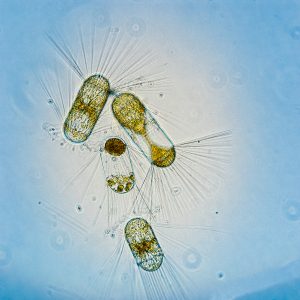
Diatom photo by Maria Stenzel
Phytoplankton are microscopic, plant-like creatures that drift in the ocean using sunlight to make energy through a process called photosynthesis.
They play a critical role in the carbon cycle, drawing carbon dioxide out of the atmosphere and into the deep ocean.
They contribute to over half of the Earth’s oxygen — more than the trees and plants on land combined!
That is one mighty invisible forest.
Arctic vs Antarctic Fjords
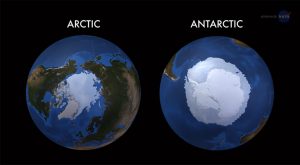
Image courtesy of NASA
Arctic and Antarctic fjords do not behave in quite the same way. Due to frequent seasonal freeze/thaw cycles in the Northern Hemisphere, Arctic fjords receive more silt and sediment input from melting glaciers on land. These particles get suspended in the sea and reduce levels of phytoplankton growth. Antarctic fjords do not experience the same level of sediment runoff from land, and researchers are finding an abundance of life in the water and on the fjord seabed.
Food Web
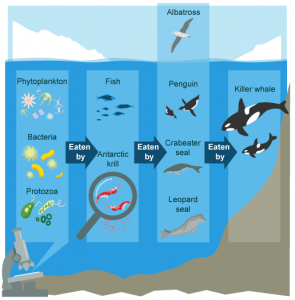
Image courtesy of BBC
Phytoplankton make up the foundation of the marine food web.
A food web is a way of representing how energy and matter flow between different organisms in an ecosystem. The first link starts with organisms called primary producers, they use sunlight to make energy. Think of phytoplankton in the ocean as being the same as grass and plants on land! They are eaten by other organisms like little swimming ocean animals called zooplankton! The most important zooplankton in the Antarctic ecosystem is the krill. These are then eaten by larger animals such as fish, birds, seals, and whales!
History
The FjordPhyto collaboration between scientists, tour operators, polar guides, and travelers all started with an email and a serendipitous rendez-vous in the Antarctic.
2015
- May – First email contact between polar guides (Robert Gilmore and Annette Bombosch at Polar Latitudes) and FjordEco researchers (Dr. Maria Vernet).
- Dec – Serendipitous rendez-vous between Polar Latitudes and FjordEco team in the Antarctic. Dr. Maria Vernet gives Robert and Annette bottles to help collect phytoplankton samples from tour ships.
2016
- Feb/March – First trial sampling season of FjordPhyto begins (aboard Polar Latitudes ship, analyzed by graduate student Martina Mascioni using microscopy).
- June – Graduate student Allison Cusick arrives at Scripps Oceanography for a Masters program and joins forces with Dr. Maria Vernet to design a full program for FjordPhyto citizen science project. Samples collected by polar guides and travelers visiting Antarctica contribute data to Allison and Martina’s PhD dissertations.
- Nov – Second sampling season of FjordPhyto (aboard Polar Latitudes and G Adventures ships – Martina analyzes samples using microscopy – results from this first season are published in 2019 here).
2017
- March – FjordPhyto citizen science concept presented at GRC: Polar Marine Science conference, California.
- May – FjordPhyto introduced at the Citizen Science Association Conference, Minnesota.
- June – Full FjordPhyto sampling plan developed and submitted to the National Science Foundation for funding. Allison Cusick receives her Master’s degree in Marine Biodiversity & Conservation from Scripps Institution of Oceanography. Martina Mascioni continues to analyze collected samples using microscopy.
- Sept – BIG FUNDING NEWS - FjordPhyto receives launch support from the National Science Foundation through a grant entitled Public Participation in STEM (Science Technology Engineering Math) Research (PPSR). This allows Allison Cusick to begin the PhD program at Scripps Institution of Oceanography and continue efforts expanding the program.
- Oct – FjordPhyto team meets the Polar Tourism community and the Polar Citizen Science Collective at the AECO/IAATO Polar Field Guide Staff conference, Iceland.
- Nov – Third sampling season of FjordPhyto (Polar Latitudes, G Adventures, Antarctica21, Hanse Explorer, Lindblad Expeditions, Quixote Expeditions – samples are analyzed using microscopy and next generation sequencing tools).
- Dec – Allison joins Antarctica21 M/V Hebridean Sky as Guest Scientist to meet guides and travelers, improve FjordPhyto logistics, and learn more about the region. Allison collects additional samples for her and Martina Mascioni’s PhD theses.
2018
- April – FjordPhyto samples continue to be processed and analyzed by Martina and Allison.
- May – FjordPhyto presented at Association of Polar Early Career Scientists (APECS) International Online Conference.
- June – FjordPhyto presents at POLAR 2018 Scientific Committee on Antarctic Research (SCAR) conference, Switzerland.
- Nov – Fourth sampling season of FjordPhyto (Polar Latitudes, G Adventures, Antarctica21, Hurtigruten, Ocean Expeditions, Quixote Expeditions, Cheesemans’ Ecological Safaris). Allison Cusick joins Antarctica21 M/V Ocean Nova and Cheesemans’ Ecological Safaris M/V Ioffe as Lecturer (Dec – Mar).
2019
- Mar – FjordPhyto presented at Citizen Science Association’s CitSci2019 conference in Raleigh, North Carolina
- Apr – FjordPhyto presented at SCAR Humanities & Social Sciences (SC- HASS) conference in Ushuaia, Argentina
- June – FjordPhyto attends the Building the NASA Citizen Science Community Workshop in Tuscon, Arizona
- July, – Martina Mascioni from Argentina receives inaugural IAATO Antarctic Fellowship to join the Vernet Lab in the USA summer of 2020 (postponed until further notice due to COVID global pandemic)
- Aug – FIRST PUBLICATION HOT OFF THE PRESS – Mascioni et al., 2019 – Mascioni, M., Almandoz, G.O., Cefarelli, A.O., Cusick, A.M., Ferrario, M.E., Vernet, M. (2019). Phytoplankton composition and bloom formation in unexplored nearshore waters of the western Antarctic Peninsula. Polar Biology 1-14.
- Sept – FjordPhyto presented at AECO/IAATO Field Staff Conference, Sturbridge, MA.
- Oct/Nov – FjordPhyto joins with Hurtigruten for Molecular Learning Lab Allison Cusick joins on board new M/S Roald Amundsen
- Nov– Fifth sampling season of FjordPhyto (Polar Latitudes, G Adventures, Antarctica21, Hurtigruten, Quixote Expeditions). Allison Cusick joins Antarctica21 M/V Magellan and M/V Ocean Nova as Lecturer (Nov – Feb).
2020
- Jan – SECOND PUBLICATION HOT OFF THE PRESS – Cusick et al., 2020 – Cusick, A. M., Gilmore, R., Bombosch, A., Mascioni, M., Almandoz, G. O., & Vernet, M. (2020). POLAR TOURISM AS AN EFFECTIVE RESEARCH TOOL. Oceanography, 33(1), 50-61.
- Feb – FjordPhyto presented at the Ocean Sciences Meeting Conference, San Diego, CA (with over 6300 attendees).
- March – GLOBAL PANDEMIC strikes. Polar guides and Antarctic researchers prioritize getting home swiftly and safely. Samples and gear are kept safe by trusted polar guides until the world re-opens.
- March – FjordPhyto welcomes two new members: Gabriela Lamanna and Celeste Kroeger Campodonico, two Masters students at Scripps Institution of Oceanography who had to pivot their original Capstone plans and decided to make more FjordPhyto visions come true (meet them in the Contact Us)! Gabriela created a short video documentary piece about FjordPhyto (coming soon!) and Celeste is creating a phytoplankton photo identification guide using microscopy images Martina has taken from samples collected by citizen scientists. Stay tuned!
- June – Martina postpones her summer 2020 IAATO Fellowship plans visit to Vernet Lab in USA until further notice. Allison is able to start working in the lab to process genetic samples. FjordPhyto attends NASA CitSci 2020 webinar series.
- Aug – FjordPhyto presents at SCAR 2020 Online conference (free) – Dr. Vernet (video presentation), Martina (poster session and video presentation), and Allison (Slack discussion and poster session). Originally scheduled to be in Hobart, Tasmania.
- Oct - FjordPhyto published in ECO Magazine, Dr. Maria Vernet and Allison Cusick recognized as Polar Heroes.
- Nov - Celeste and Martina gave a talk at IDEAL (Centro de Investigación Dinámica de Ecosistemas Marinos de Altas Latitudes, Chile) ---> read more here https://www.centroideal.cl/2020/para-celebrar-el-dia-de-la-antartica-vuelven-charlas-bajo-cero-con-ciencia-arte-y-ciencia-ciudadana/
2021
- Jan - Survey design specialists Brooke Dixon and tourism management expert Daniela Cajaio join the FjordPhyto team to analyze participant feedback surveys. Results for a manuscript will be published soon!
- Jan - Education specialist and master's student Carmen Zamora and undergraduate artist Jordan Newman join the team to create educational curriculum around Phenomena within NGSS Next Generation Science Standards and featured artwork.
- March - BIG FUNDING NEWS - FjordPhyto receives funding from NASA's Citizen Science for Earth Systems Program (CSESP) award # 20-CSESP2020-0039
- April - FjordPhyto presents live at SciStarter events with Verena Meraldi Hurtigruten and Citizen Science Around the World as well as featured on VikingTV
- April - Martina presented at JoCSHA organized by the Argentine Antarctic Institute.
- May - FjordPhyto is featured with Hearts in the Ice during the Citizen Science Association Conference session 1 and session 3
- June - Two undergraduate students Christian Johnson and Anesse Pinpokintr join the FjordPhyto team to help analyze phytoplankton DNA data to understand the diversity of species found in samples.
- Sept - Celeste presents about the FjordPhyto identification book at the Chilean Congreso Ciencia Ciudadana
- Nov - Training platform launched with the Polar Collective - FjordPhyto course available!
- Nov - Allison presents at the biennial SCAR SC-HASS Humanities and Social Sciences Conferences presenting participant feedback results.
- Nov - Lorenzo presents about FjordPhyto and the new sampling map at IX JJIyE Jornadas de Jovenes Investigadores y Extensionista
- Nov - Allison speaks as citizen science expert on a panel discussing Evolution of Tourism with Condé Nast Traveler
- Nov - Featured on Scripps Oceanography Community page
- Nov - Sixth sampling season of FjordPhyto (Antarctica 21, Aurora, Hurtigruten, Polar Latitudes, Quixote Expeditions). Allison Cusick joins Antarctica21 M/V Magellan Martina joins Hurtigruten M/V Roald Amundsen
- Dec - Martina presents about the FjordPhyto accomplishments at CIACIAR 3rd Congreso de Ciencia Abierta y Ciudadana Argentina La Plata
2022
- Feb - FjordPhyto team prepares poster and oral presentations for Ocean Sciences Meeting virtual #OSM22
- Mar - FjordPhyto team Martina Mascioni and Allison Cusick join Viking Octantis on the Antarctic Peninsula
- Apr - Martina and Allison present a virtual talk at Museo de La Plata, Argentina (en español)
- Apr - Allison presents FjordPhyto with Hearts in the Ice at Exploring by the Seat of Your Pants
- May - FjordPhyto team presents at C*Sci 2022 Virtual conference
- Summer - Martina works at Scripps Inst. of Oceanography and J. Craig Venter Institute (USA) for her SCAR/IAATO Fellowship
2023
- Feb - Allison joins Hurtigruten's M/V Roald Amundsen in Antarctica
- May - FjordPhyto attends the NASA Citizen Science Leaders meeting and C*Science Association Conference
- June - Allison and Martina teach in Puerto Rico with the NASA SCoPE collaboration PRO OCEANOS
- July - Molecular Life of Diatoms conference, San Diego CA USA
- July - Martina defends her PhD and becomes Dr. Mascioni!
- Aug - Present at the Southern Ocean Observing System Symposium (SOOS) Hobart, Tasmania
- Aug Martina and Tobias attend Argentina I Encuentro Nacional de Ciencia Ciudadana
Check out our blog link for more in depth stories!